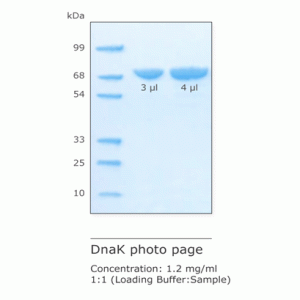Glutathione Agarose Beads
$0.00 – $2,035.55
| SKU | OPTIONS | Price | Quantity | ||
|---|---|---|---|---|---|
| GAB-100 | 10 ml (20ml total volume with 50% suspension) | $94.04 | |||
| GAB-200 | 25 ml (50ml total volume with 50% suspension) | $169.95 | |||
| GAB-300 | 100 ml (200ml total volume with 50% suspension) | $509.85 | |||
| GAB-500 | 500 ml (1000ml total volume with 50% suspension) | $2,035.55 | |||
| GAB-OEM | Any Size | Please inquire |
- Description
- Additional information
- Documents
- Q&A
Description
Description:
Glutathione S-transferase (GST) gene fusion systems have been widely used for obtaining large amounts of desirable protein in Escherichia coli. The fusion protein, which contains a GST tail can then be purified through affinity chromatography. MCLAB’s glutathione agarose is designed for the specific purification of GST recombinant proteins and other glutathione-binding proteins. Glutathione agarose is uniquely formulated for excellent binding capacity and purity of the protein of interest.
Specifications
| Chromatography technique | GST-tagged protein purification |
| Matrix | Highly cross-linked 6% beaded agarose |
| Active group | Glutathione |
| Active group density | >40 umol/ml drained medium |
| Binding Capacity | > 25 mg horse liver GST/ml resin |
| Spacer | 1,4-bis(2,3-epoxypropoxy)butane (12 atom stable and uncharged ether hydrophilic linkage) |
| Bead geometry & size | Spherical 50 to 150 um |
| Bead mean diameter d50v | 90 um |
| pH Stability working range | 4 to 13 |
| pH Stability cleaning in place (cip) | 4 to 13 |
| Chemical stability | Stable to commonly used aqueous solutions. Can be used with non-ionic detergents, denaturing solvents, e.g. 8 M urea and 6 M guanidine hydrochloride, Stable in organic solvents, e.g. 50% methylformamide and 50% dioxane. |
| Storage | 2 to 8 degC in 20% Ethanol |
Protocol:
The following instruction for GST-fusion protein purification can be scaled up or down depending on the user’s preference. This manual exemplifies sample preparation from a specific amount of starting material and purification using 1 ml resin.
1. Centrifuge sample after cell lysis to remove undissolved membranes and cellular debris before applying to the purification column.
2. Wash the purification column with 10x bead volume of Binding Buffer to remove azide.
3. Dilute an appropriate amount sample with a 1:1 ratio of Binding Buffer before applying to the purification column.
4. Wash the purification column with 10x bead volume of Binding Buffer or until no proteins can be detected in the washes.
5. Elute the bound protein of interest with 5x bead volume of Elution Buffer.
6. GST agarose beads can be saved for later use by washing the purification column with Binding Buffer containing 3 M NaCl. After a thorough wash, the purification column should be equilibrated in Binding Buffer containing 2 mM sodium azide and stored at 4°C.
GST-fusion proteins are generally eluted from glutathione agarose beads with the use of excess glutathione. Alternatively, GST-fusion protein can be encoded with a cleavage site between the GST and the protein, allowing the desirable protein to be eluted with the use of a protease.
Recommended Storage Conditions: 2ºC to 8ºC.
Binding Buffer:
50 mM Tris
150 mM NaCl
pH 8.0
Elution Buffer:
50 mM Tris pH 7.8
0.15 M NaCl
1 mM EDTA
1 mM DTT
10 mM GST
Additional information
| OPTIONS | 10 ml (20ml total volume with 50% suspension), 25 ml (50ml total volume with 50% suspension), 100 ml (200ml total volume with 50% suspension), 500 ml (1000ml total volume with 50% suspension), Any Size |
|---|
Manual & Protocols
COA ( Certificate of Analysis )
MSDS & Certificates
The Q&A for this product will be available soon.



